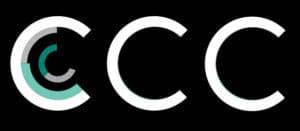Model Organisms
Return to Lesson MenuLesson Overview
Summary
In this activity, students select a model organism and brainstorm possible strengths and limitations of using this model in scientific experiments.
For editable worksheets and powerpoints please login here.
Big Idea(s)
Models have strengths and weaknesses. Scientists use a variety of animal models, but always have to be aware of the strengths and limitations of the models they have selected.
Vocabulary words
Model organisms
Materials
Experimental Models Worksheet
Grouping
Groups of 3-4 students
Timing
25 min total
5 min – Intro
10 min – Brainstorm
10 min – Discussion/share out
Prerequisites for students
None.
Learning goals/objectives for students
- Establish the importance of model organisms as a scientific tool.
- Understanding of the limitations of models (i.e. because of the common evolution of all life, model organisms can provide insights into the biology of other species. This is especially useful when experiments in other species (humans, for example) are unfeasible or unethical. However, caution must be applied to generalizing those conclusions from one organism to another)
- Ability to support their claim using evidence.
Content background for instructor
Model organisms are used to study biological phenomena. The expectation is that the results gained in model organism experiments will translate to insights into the biology of other organisms. The common ancestry and evolution of all life on earth, and the conservation of many metabolic processes and biological pathways through that evolution, allows for conclusions in one organism to be applied to another. Model organisms are especially helpful to study human diseases with human experimentation is unfeasible or unethical. When used for the study of human diseases, animal models can be classified into three catagories: homologous, isomorphic, and predictive. Homologous: both the animal and human have the same causes, symptoms, and treatments for the disease. Isomorphic: both animals and humans have the same symptoms and treatments for the disease. Predictive: Only a few aspects of the disease is present in animals, but it is helpful in isolating and predicting certain aspects in human disease.
In animals, to prevent cruelty, many laws governing the use of models organisms follow three guidelines: 1) experiments must be proven absolutely necessary, 2) animals must be properly anesthetized, 3) animals must be killed as soon as the experiment is over. At each research institution, animal welfare laws and guidelines are upheald by a local review board called the Institutional Animal Care and Use Committee (IACUC). All experiments approved by IACUC must prove a potential for benefit to human health, demonstrate a minimization of pain and distress to the animal, proper euthanasia protocols, and the researcher must justify their experimental design while using the principles of Replacement, Reduction and Refinement. (Replacement – using alternatives to animal research if available, like computer modeling, cell culture, and “lower-order” animals instead of “higher-order” animals (like primates and mammals). Reduction – reducing the number of model organisms used for an experiment to the minimum necessary, supported by statistical calculations. Refinement – making sure experimental design is as painless as possible in order to minimize the suffering of each model organism.
There are even more ethical considerations to human subjects research, such as dignity, bodily integrity, autonomy, informed consent, and privacy. To read more about the topic, please refer to the following papers: https://www.ncbi.nlm.nih.gov/pmc/articles/PMC1860367/, https://www.researchgate.net/publication/283855484_Ethical_Considerations_of_Human_Research
Lesson Implementation/Outline
Introduction
(5 mins)
Let the students know they will be doing a brainstorm around an animal as a scientific model. Many different animals are used as model organisms. Each has their own strengths and limitations, just like any model.
Activity
(10 mins)
- Have groups select one model organism (human, mouse, pig, monkey, or bacteria)
- Have groups brainstorm the advantages and disadvantages of their selected model organism.
Wrap-up/Closure
(10 mins)
- Ask each group which organism they chose.
- Pick a reporter from each group at random.
- Have each group report the advantages of their model organism. If more than one group selected the same animal go back and forth between the two groups for all the advantages until both groups run out of things to add.
- Once all the advantages have been shared, ask the rest of the group for comments or questions. There are often many spontaneous discussions around the ethics of human and animal research. See the content background section to help guide your facilitation of these discussions.
- Next, ask each group reporter for the disadvantages as well. Proceed using the same steps as described for the advantages.
- Note that a robot can also be thought of as a model organism, as some of the activities that it preforms can be extrapolated to the behavior of cells. If you have time, ask the students the pros and cons of using a robot as a model organism.
NGSS
Topics
Natural Selection and Evolution
ETS2 Links Among Engineering, Technology, Science, and Society
Performance Expectations
HS-LS4-1 Biological Evolution: Unity and Diversity
(Model organisms can be used to study human biology and diseases because the model organisms and humans have a common ancestry.)
Disciplinary Core Ideas
HS LS4.A Evidence of Common Ancestry and Diversity
ETS2.A Interdependence of Science, Engineering, and Technology
(Science and engineering are linked and use similar tools to answer complex questions. For example, we can use robots as a model for cells, which is similar to how scientists use model organisms as models for human biology and disease.)
Science and Engineering Practices
Practice 2. Developing and Using Models
Practice 6. Constructing Explanations and Designing Solutions
Cross-Cutting Concepts
Systems and System Models
